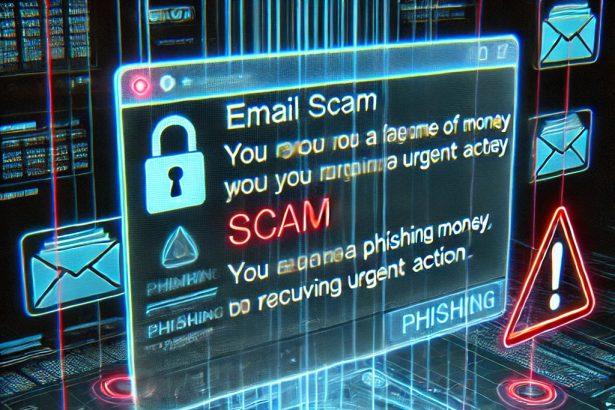The “MT103 Payment Advice” email scam is a deceptive phishing campaign that impersonates legitimate financial institutions to trick recipients into divulging sensitive information. By mimicking official wire transfer notifications, this scam exploits the trust users place in financial communications, leading to potential identity theft and financial loss.
Threat Overview
This scam email claims to provide an MT103 remittance copy for a wire transfer allegedly made to the recipient’s company. It includes fabricated details such as the sending bank (e.g., CitiBank N.A.), transaction reference numbers, and payment methods to appear authentic. The email prompts the recipient to click on a link labeled “View MT103 Remittance Copy Here,” which leads to a counterfeit login page designed to harvest login credentials.
Threat Details
| Attribute | Details |
|---|---|
| Threat Type | Phishing, Scam, Social Engineering, Fraud |
| Associated Email Addresses | Not specified |
| Detection Names | alphaMountain.ai (Phishing), Combo Cleaner (Phishing), CRDF (Malicious), Kaspersky (Phishing), Webroot (Malicious) |
| Symptoms of Infection | Unauthorized online purchases, changed online account passwords, identity theft, illegal access of the computer |
| Damage | Loss of sensitive private information, monetary loss, identity theft |
| Distribution Methods | Deceptive emails, rogue online pop-up ads, search engine poisoning techniques, misspelled domains |
| Danger Level | High |
| Removal Tool | SpyHunter |
In-Depth Analysis
How Did I Get Infected?
The infection vector is typically a deceptive email that appears to be a legitimate payment notification. The email contains a link to view a supposed MT103 remittance copy. Clicking this link directs the recipient to a fraudulent login page that mimics a secure document portal, prompting the user to enter their email credentials. Once entered, these credentials are captured by the attackers.
What Does It Do?
Upon obtaining the victim’s login credentials, attackers can access the victim’s email account and potentially other linked accounts. This access allows them to:
- Steal sensitive personal and financial information
- Send scam emails or other fraudulent messages from the victim’s account
- Deliver malware to the victim’s contacts
- Sell the stolen information to third parties.
Should You Be Worried for Your System?
Yes. While the primary goal of this scam is to harvest login credentials, the access gained can lead to significant personal and financial harm. Additionally, if the attackers distribute malware through the compromised account, it could lead to further system infections.
Scam Email Content
Subject: MT103 Payment Advice
As requested by our client, please find the credit notice made to your company below.
View MT103 Remittance Copy Here
Swift Input: FIN 103 – Single Customer Credit Transfer
Sending Bank: CITIUS33XXX (CITIBANK N.A.)
Sender’s Reference: DBT-33-028932
Bank Operation Code: CRED
Payment Details:
Date: 28/04/2025, 11:47:38 AM
Method: MT103 Wire Transfer
Currency: USD
How to Manually Identify and Remove Email Scams
Manually removing email scams involves recognizing fraudulent messages, securing your accounts, and taking precautions to prevent future attacks. Follow these steps:
Step 1: Identify Suspicious Emails
Before taking action, you need to identify scam emails. Common signs include:
- Unknown Sender: Emails from unfamiliar addresses, especially if they claim to be from banks, tech support, or government agencies.
- Urgency or Threats: Scammers often pressure you to act immediately (e.g., “Your account will be closed in 24 hours!”).
- Poor Grammar & Spelling: Many scam emails contain obvious grammatical mistakes.
- Suspicious Links & Attachments: Hover over links (without clicking) to check the actual URL. If it looks odd, don’t click.
- Requests for Personal Information: Legitimate companies will never ask for passwords, Social Security numbers, or credit card details via email.
Step 2: Do Not Click Links or Download Attachments
If you suspect an email is a scam:
- Do not click on any links.
- Do not open any attachments.
- Do not reply to the sender.
Step 3: Report the Email Scam
You can report the scam email to various authorities:
- Gmail/Outlook/Yahoo Users: Click the “Report Phishing” or “Report Spam” button in your email client.
- FTC (Federal Trade Commission, USA): Report to FTC Complaint Assistant.
- Google Safe Browsing: If the scam email contains a phishing website, report it here.
Step 4: Block the Sender
- Gmail: Open the email, click the three dots in the top-right corner, and select “Block [Sender Name]”.
- Outlook: Open the email, select “Junk” > “Block Sender”.
- Yahoo Mail: Open the email, click “More” > “Block Sender”.
Step 5: Check Your Accounts for Unauthorized Activity
If you accidentally clicked a link or shared sensitive information:
- Change your passwords immediately. Use strong, unique passwords for every account.
- Enable two-factor authentication (2FA). This adds an extra layer of security to your accounts.
- Check your banking statements for unauthorized transactions.
Step 6: Scan Your Device for Malware
Some email scams contain malware hidden in attachments or malicious links. Run a full system scan using built-in tools:
- Windows Defender (Windows 10/11):
- Go to Settings > Update & Security > Windows Security > Virus & Threat Protection.
- Click “Quick Scan” or “Full Scan”.
- Mac Users:
- Use Malwarebytes for Mac or another security tool.
Step 7: Adjust Your Email Security Settings
- Enable email filtering to reduce spam and phishing emails.
- Add a third-party spam filter such as Mailwasher or Spamihilator.
- Educate yourself and others on phishing techniques to avoid future scams.
How to Remove Email Scams Using SpyHunter (Automated Method)
For users who prefer an automated, foolproof method to remove threats linked to email scams, SpyHunter offers an advanced security solution. SpyHunter is an anti-malware tool designed to detect and remove phishing-related threats, spyware, Trojans, and other cyber threats. Follow these steps:
Step 1: Download SpyHunter
- Visit the official SpyHunter download page: Download SpyHunter
- Click on “Download” and save the installation file to your computer.
Step 2: Install SpyHunter
- Locate the downloaded file (SpyHunter-Installer.exe) and double-click to open it.
- Follow the on-screen installation instructions.
- After installation, launch SpyHunter.
Step 3: Perform a Full System Scan
- Open SpyHunter and navigate to “Malware/PC Scan”.
- Click “Start Scan Now” to begin a deep scan of your system.
- SpyHunter will analyze files, registry entries, and processes for any threats linked to email scams, phishing, and malware.
Step 4: Review and Remove Detected Threats
- Once the scan completes, SpyHunter will list all detected threats.
- Click "Fix Threats" to remove them.
- Restart your computer to complete the removal process.
Step 5: Enable Real-Time Protection
SpyHunter includes real-time protection features to help prevent future infections:
- Enable Active Guards: This monitors your system for malware in real time.
- Schedule Automatic Scans: Set up periodic scans to detect new threats early.
Step 6: Keep SpyHunter Updated
- Regularly check for updates to ensure SpyHunter detects the latest threats.
- To update SpyHunter, open the app and go to "Settings" > "Update", then click "Check for Updates".
Preventing Future Email Scams
Now that you've removed email scams, take proactive steps to prevent them in the future:
Use a Secure Email Provider
- Consider switching to a secure email provider like ProtonMail or Tutanota, which offer advanced encryption.
Be Cautious with Email Links
- If you receive an email with a suspicious link, verify the website’s legitimacy before clicking.
Avoid Public Wi-Fi for Sensitive Activities
- Scammers can use public Wi-Fi to intercept your data. Use a VPN when accessing email on public networks.
Regularly Change Your Passwords
- Update your passwords every few months, and never reuse old passwords.
Use Anti-Phishing Extensions
- Install browser extensions like Bitdefender TrafficLight or Avast Online Security to detect phishing links in real-time.
Email scams are a serious cyber threat that can lead to financial loss, identity theft, or malware infections. By following the manual removal steps, you can effectively identify and remove suspicious emails on your own. However, for advanced protection, using SpyHunter ensures a more thorough and automated approach to detecting and removing phishing-related threats.
Recommended Action
For a fast and efficient way to remove email scams and related malware, download and install SpyHunter now: Download SpyHunter
By staying informed and proactive, you can protect yourself from future email scams and online threats!
Conclusion
The "MT103 Payment Advice" email scam is a sophisticated phishing attack that leverages the appearance of legitimate financial communications to deceive recipients. By understanding the tactics used and remaining vigilant, users can protect themselves from such threats. If you have interacted with such an email, it is crucial to change your passwords immediately and scan your system for potential malware.




